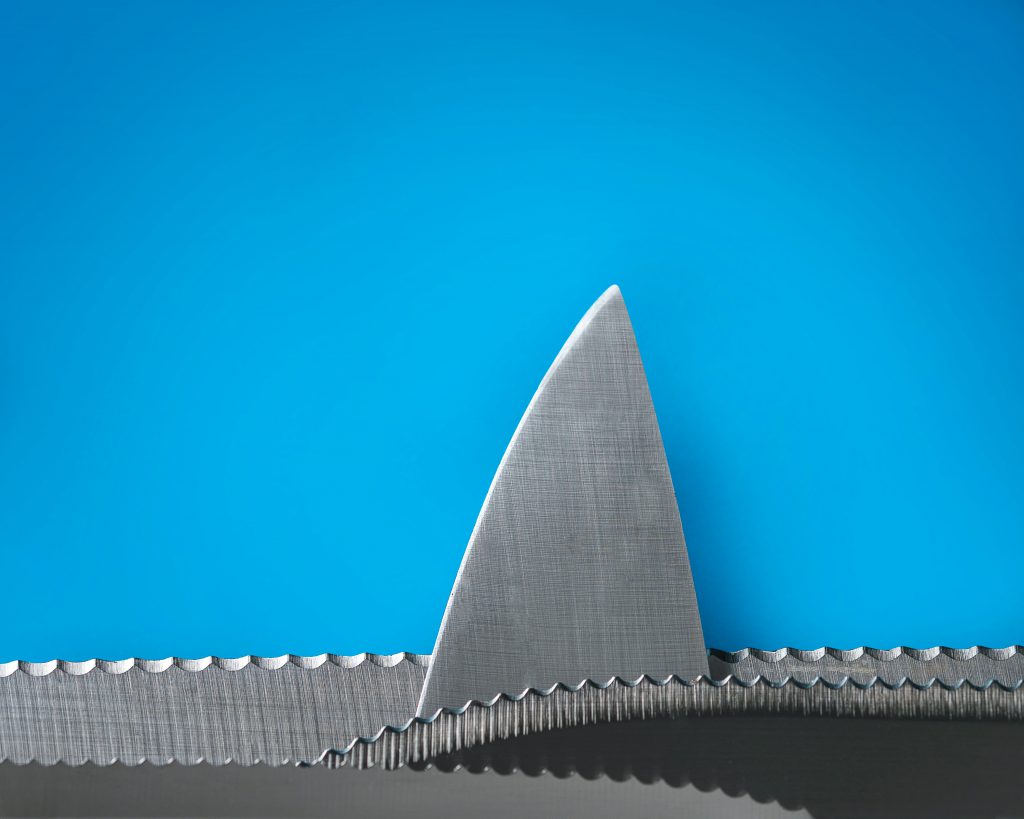One of the secrets of a successful kitchen is having perfectly sharpened knives. From quality knife brand Victorinox, the experts in perfectly crafted chefs knives, comes this knife sharpening and cleaning guide.
A blunt knife has no place in the kitchen. That’s why sharpening is essential when you work with knives. Learn why you should sharpen your knives, how and when to sharpen a knife, which knife sharpener to use, which angle is best when sharpening and how to take care of your knives.
Test your knife by running it through a piece of paper. You may already know that your knife is dull, but if you aren’t sure, fold a piece of newspaper in half (or just use a single sheet of computer paper), hold it up in the air, and bring your knife down to cut through it. If your knife doesn’t slice through the paper, it’s time to sharpen it. The knife should continuously cut through the paper without stopping if it is sharp and in good shape.

How to keep your knives sharp
- Avoid the dishwasher – especially for those long blades
- Use good quality cutting boards in wood or plastic
- Store in a knife block or special drawer
Sharpening Your Blades
How to Use a steel
Hold the honing steel upright and pull the knife downwards towards you
Repeat 10 times
Sharpen every 30 or so uses
Which sharpening steel to use
Steel is. . .
Easy handling
Good for daily use
Removes only a little material
Not suitable for very blunt knives
Ceramic is. . .
Fast and efficient
Removes significant material
Incorrect technique can harm the knife
Not suitable for a rough blade
Diamond Coated is. . .
Fast and efficient
Removes significant material
Incorrect technique can harm the knife
Not suitable for a rough blade
The diamond coating quickly wears down
When using a knife sharpener (manual or electric)
Knife Cleaning
Chopping, slicing, mincing. Knives work hard in the kitchen and are bound to get dirty with every day use. Properly cleaning them afterwards has a huge impact on how well they age. Read our tips on how to take good care of both blade and handle.
6 Tips on How to Clean a Knife
- Wash immediately
It’s much easier to clean the blade if you wash your knife straight after using it, before food can harden and stick to the blade. Citrus fruit, tomatoes and onions can all leave an acidic residue which can damage the blade if left for longer periods. - Don’t put your big knives in the dishwasher
Wet conditions and chemicals in dishwasher soap can harm your blade as well as the handle – especially wooden handles. The dishwasher sprays water in rhythmic cycles which cause the blade to bump against other dishes or the dishwasher rack itself. This simulates hundreds of cuts and can dull the blade. If the dishwasher ever starts to rust, the rust will automatically and continually contaminate the water, which in turn creates the risk that rust might also affect knives and cutlery as well.
Tip: Place a piece of tinfoil in the cutlery basket. This neutralizes the effect of the rust in the dishwashing water. - Clean by hand
The best way to clean a blade is actually by hand. Just hold it under cold running water and rub the blade with your fingers, without touching the sharp edge. You can also use a towel or a sponge but make sure they are clean so they don’t scratch the blade’s metal surface. - Keep calm and stay safe
Knives are sharp so you should always keep your calm when handling a knife, even if you are only cleaning it. It’s best to hold the knife blade parallel to the sink so you can see the whole surface of the blade and keep the sharp edge in direct sight. - Use water
A knife blade is perfectly polished so that nothing should stick to it. Foods scraps can be washed off with running water and some light scrubbing. The only exception is greasy food – use a small amount of soap to wash off oily residues. - Dry immediately
Don’t let your knives air